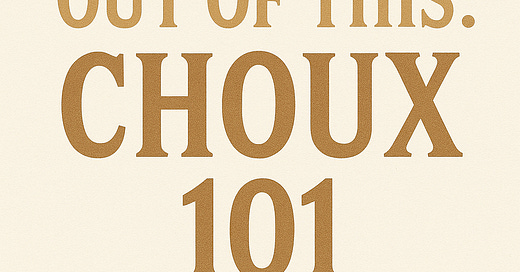1. Introduction: Simplicity That Defies Logic
Pâte à choux is one of those rare foundations in pastry that manages to be both humble and extraordinary. At first glance, it’s deceptively simple — a dough made from little more than water, milk, butter, flour, and eggs. No yeast. No baking powder. Yet it defies logic with its ability to puff, hollow, and crisp into shapes as light as air and as delicate as lace. It’s the base for iconic desserts like éclairs, cream puffs, Paris-Brest, and croquembouche, but also takes a savory turn in gougères or filled choux buns.
It’s also a benchmark for skill. Every step — from cooking the panade (Roux) to emulsifying the eggs, from piping to baking — demands attention, timing, and a solid understanding of the “why.” It can look simple, but any pastry chef who’s made dozens of batches knows it can go wrong in more ways than you’d think. It cracks. It flattens. It bursts. It stays soggy or tastes like scrambled eggs. But when it’s done right, few things are as satisfying or versatile.
This post aims to unpack pâte à choux in its entirety — its history, technique, troubleshooting, variations, and even modern adaptations. Whether you’re a seasoned pro or just getting started, this is your deep dive into one of pastry’s most important preparations.
Keep reading with a 7-day free trial
Subscribe to Alejandro’s Substack to keep reading this post and get 7 days of free access to the full post archives.




